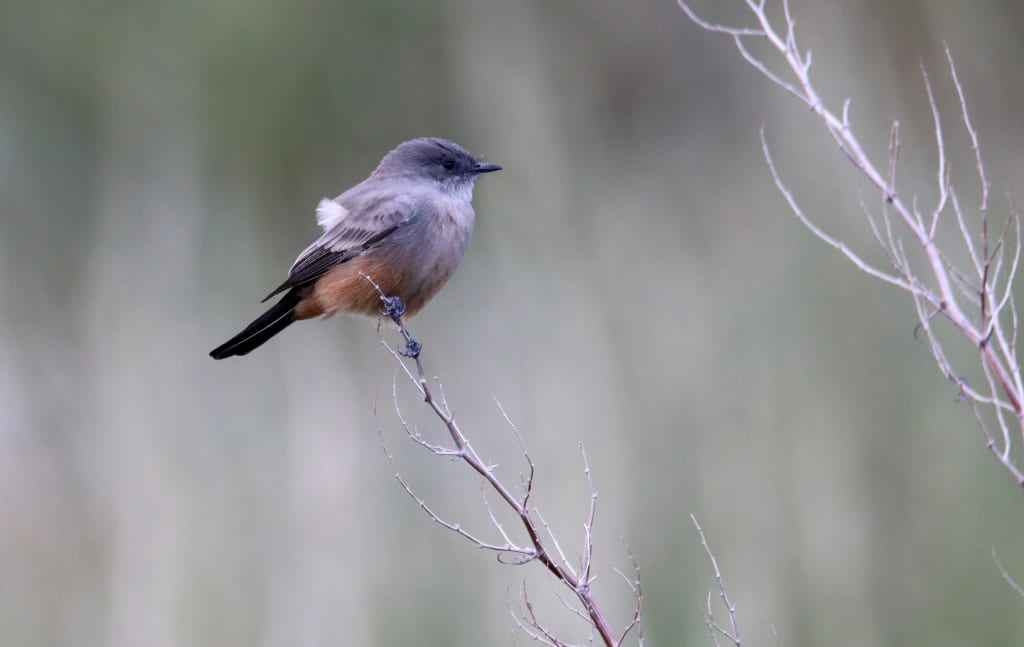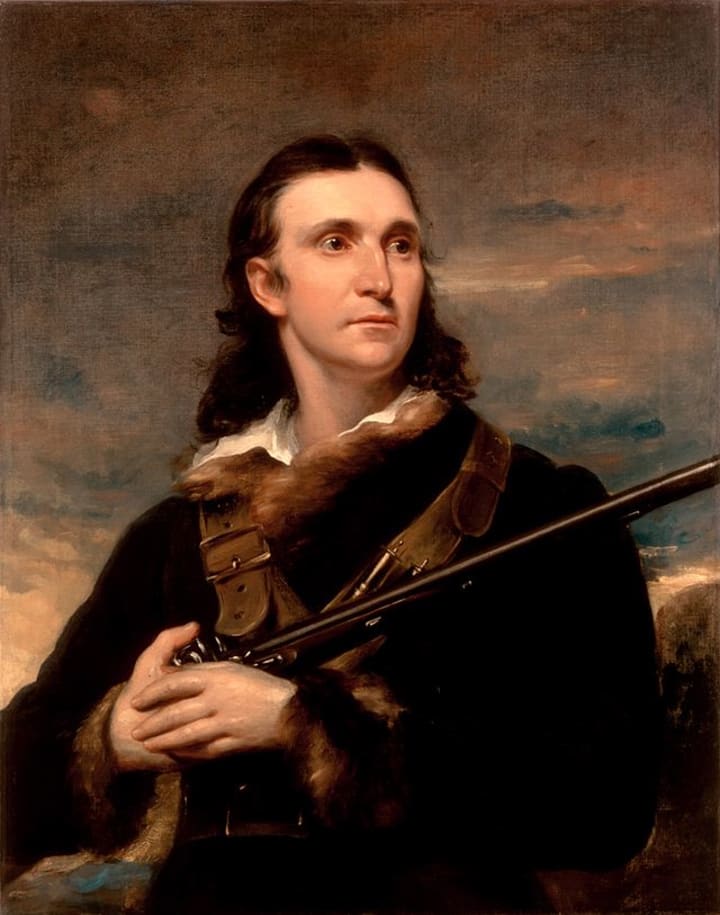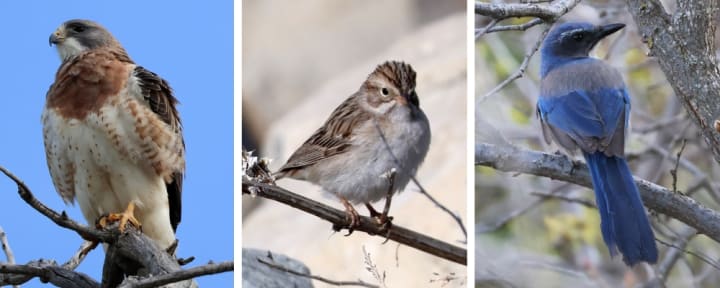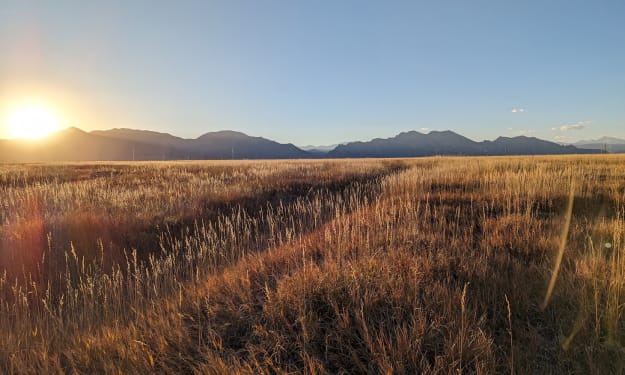The Debate Over Eponymous Bird Names
Why is there is a movement to change them?

Birdwatching, or birding, is a beloved pastime for many, offering a unique blend of outdoor adventure, scientific curiosity, and a deep connection with nature. However, there's a growing movement within the birding community to change the names of birds that were given in regards to people, often their discoverers. This movement, though it might seem surprising at first, is grounded in important considerations about history, inclusivity, and the ongoing evolution of our relationship with the natural world.
Eponymous bird names—names that were given in reference to specific people—are quite common. Think of Audubon’s warbler, Townsend's solitaire, or Woodhouse's scrub jay. In theory, these names often honor naturalists, explorers, or patrons who made significant contributions to ornithology, and who often 'discovered' and recorded information about new birds. The general consideration is that these individuals sometimes risked their lives and dedicated their careers to expanding our understanding of avian diversity.
The issue begins to reveal itself when we dig into the historical context of some of these names. Many of the individuals honored through eponymous bird names were not just scientists but were also part of a broader colonial and imperial context. During the 18th and 19th centuries, explorers and naturalists often worked within frameworks of colonialism, which included practices and ideologies that today are widely recognized as problematic, if not outright oppressive.
Take John James Audubon, for example, after whom several birds are named. One of the most famous ornithology organizations, the National Audubon Society, uses his name as their own. While Audubon is celebrated for his artistic and scientific contributions to ornithology, there are many reasons to avoid honoring him. Audubon was a slave owner. He bought and sold enslaved people and used their labor in his personal and professional endeavors. He held racist beliefs and made derogatory statements about African Americans and Native Americans. His writings reflect these prejudices, which are now seen as deeply problematic.
On the subject of birds specifically, Audubon was known to kill large numbers of birds for his studies and illustrations. While this was a common practice in his time, modern perspectives on conservation and animal rights view this as unethical. There are even allegations that Audubon may have fabricated parts of his accounts and illustrations, claiming to have discovered species or behaviors that were later disputed by other naturalists.

So while Audubon may have been an important figure in the history of birds, it doesn't particularly follow that he should be upheld as an honorable figure. This duality is true for many historical figures whose names are enshrined in bird nomenclature.
The movement to change these names is part of a broader effort to make birdwatching—and the natural sciences more generally—more inclusive and welcoming to people from all backgrounds. Names that honor individuals with oppressive or exclusionary legacies can be alienating. They serve as constant reminders of a past that celebrated certain groups while marginalizing others. By reevaluating these names, the birding community hopes to create a more inclusive environment.
The movement away from eponymous bird names also taps into modern ethical considerations. Birding organizations and enthusiasts argue that bird names should be descriptive and accessible to everyone, regardless of their background. Names that reflect the bird’s characteristics, behaviors, or habitats are seen as more universally meaningful and informative. This shift can help dismantle barriers to entry in birdwatching, encouraging a more diverse group of people to engage with this enriching hobby.
Just as many statues and place names are being reconsidered due to their associations with historical figures who engaged in unethical practices, this reevaluation is not about erasing history but rather about acknowledging and addressing its complexities and injustices. An example of this previously being put into practice is the McCown’s longspur, named after John P. McCown, a Confederate general. In recent years, this name has been changed to thick-billed longspur, reflecting a move to disassociate the bird from a figure linked to a painful and divisive period in American history.
The thick-billed longspur illustrates another important issue when discussing eponymous bird names. While ethics is a large part of the consideration, this is not exclusively a philosophical exercise; it has practical implications. Bird names are used in field guides, scientific literature, and birdwatching checklists. Changing them can be a logistical challenge, but many argue that the benefits outweigh the difficulties. Updated names can make birdwatching more engaging and educational, providing descriptive insights that can enhance understanding and appreciation. A new birdwatcher perhaps would be able to more easily recognize a sharp-billed oriole as opposed to a Scott's oriole, as the field mark is already in the name.
In November 2023, the American Ornithological Society (AOS) announced plans to change the English common names of up to 152 North American and 111 South American birds named after people. The AOS has been studying the issue since 2021 and has 152 eponymic names on its official checklist.

Here are the key steps the AOS is undertaking:
- The AOS has established committees specifically tasked with reviewing and recommending changes to bird names.
- The AOS has adopted new guidelines and principles for changing bird names. These guidelines prioritize removing names that are offensive, derogatory, or that commemorate individuals with problematic histories.
- The AOS is involving the broader birding and scientific communities in the renaming process. This includes seeking input from ornithologists, bird watchers, and Indigenous groups to ensure a more inclusive and respectful approach to naming.
- Specific bird names that have been identified as problematic are already being reviewed and changed (such as the thick-billed longspur).
- The AOS has committed to a regular review process for bird names, ensuring that as new issues arise or as societal values change, bird names can be re-evaluated and updated accordingly.
Alongside these changes, the AOS is promoting educational initiatives to raise awareness about the importance of bird names and the reasons behind changing them. This helps to foster a broader understanding and support for these efforts within the ornithological and birding communities.
Bird names, like language itself, are not static. They evolve over time, reflecting changes in our understanding of science and society. Changing names of birds is a challenging task that requires careful consideration and broad consensus.
Looking ahead, it’s likely that more bird names will be revisited and revised. This ongoing process will require input from ornithologists, birdwatchers, historians, and the general public. By engaging in this dialogue, the birding community can ensure that the names we use for birds are respectful, inclusive, and reflective of our shared values.
About the Creator
Erica J.
Chronic-pain sufferer just trying to be healthy and enjoy life while bird lurking and photographing nature. Purchase photo prints, read birding blogs, or see hiking videos: https://linktr.ee/erica80hd
Enjoyed the story? Support the Creator.
Subscribe for free to receive all their stories in your feed. You could also pledge your support or give them a one-off tip, letting them know you appreciate their work.






Comments (1)
Interesting to read.